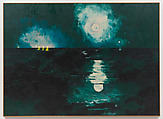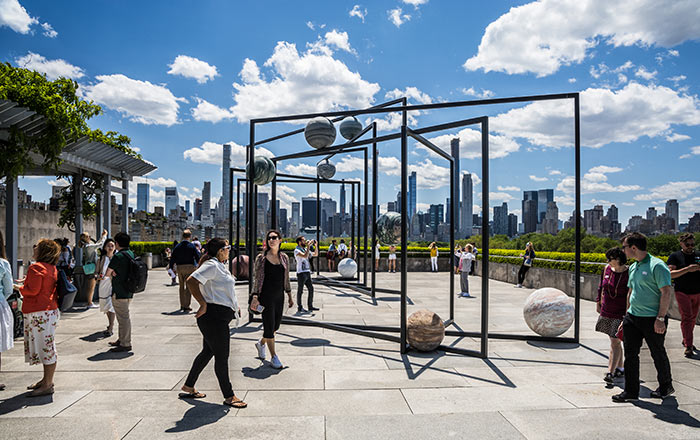The Guiding Light
Harold Ancart Belgian
Harold Ancart’s painterly practice is distinguished by a commitment to drawing, leading to the almost exclusive use of oil paint sticks when working on canvas. "Drawing has to do with potential. It is always a first step in materialization, an idea that’s going to lead to something else. Drawing is always a promise for something to come," says Ancart [1]. In The Guiding Light, a monumental nocturnal seascape, a crisp horizon line divides a densely built-up surface of strokes articulating the inky blues and greens of the sky and sea. These are perforated by luminescent orbs: a white moon and its pink-tinged lunar halo dominate, but are supported by a smaller pale planet at right and three twinkling yellow spots that meet the horizon at left, each imperfectly mirrored by the nighttime sea. Landscapes and seascapes recur in Ancart’s canvases, but natural phenomena and forms are often a starting point for an exploration of painterly abstraction. In this regard the horizon is a compositional device that may suggest the abstraction of futures, distances, and unknowns. The Guiding Light, not simply a nocturnal view of the sea, invites the viewer to contemplate possibilities beyond its subject matter.
[1] David Breslin and Adrienne Edwards, Whitney Biennial 2022, Quiet as It’s Kept, Exh. cat. Whitney Museum, New York, 2022, p. 24.
This image cannot be enlarged, viewed at full screen, or downloaded.

